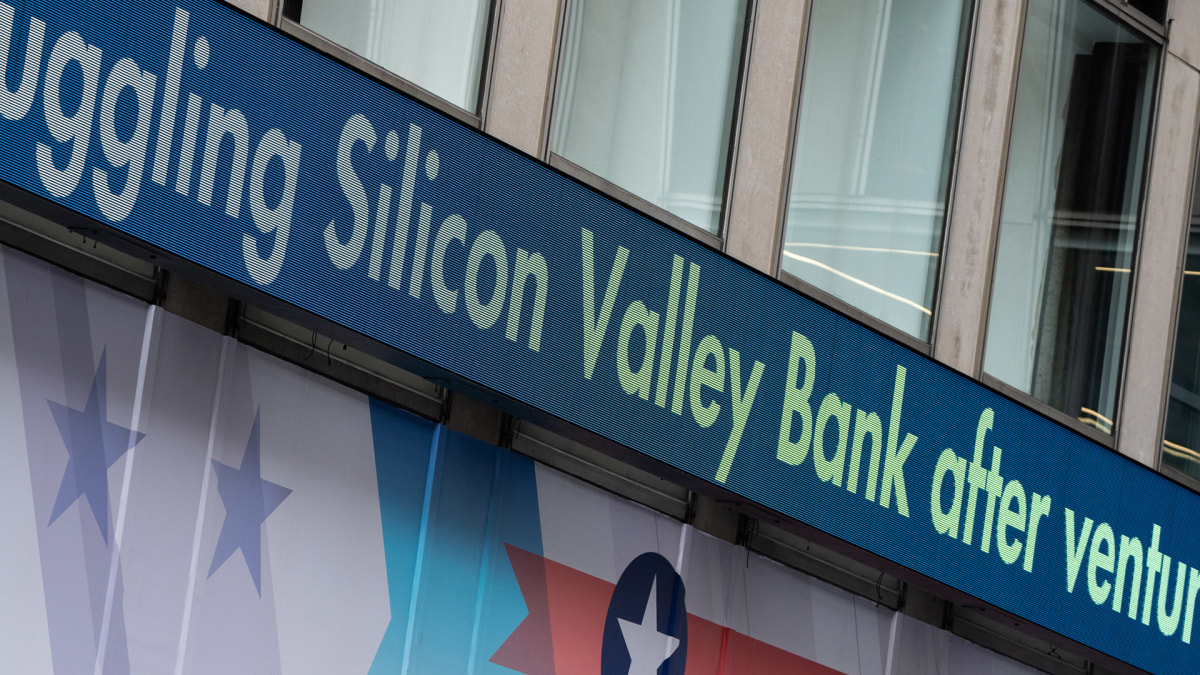
Fear in the markets is how one would sum up the current atmosphere in the world's financial markets. Investors are scared.
They are afraid that one bank after another will collapse on bad bets, either on interest rates or on assets whose value has fallen due to miscalculations.
This fear was sparked by the March 10 failure of Silicon Valley Bank, a central player in the startup economy.
Santa Clara, Calif.-based SVB was the go-to lender for many tech companies. It provided specialized financial services, industry expertise, a valuable network, and a strong reputation. It also offered a range of financial services, tailored specifically to the needs of startups, such as venture debt, corporate banking and asset management. These services are designed to help startups manage their finances, optimize their cash flow and scale their businesses.
Why SVB Went Down
Created in 1983, Silicon Valley Bank, which presented itself as a "partner for the innovation economy,” offered higher interest rates on deposits than its larger rivals, to attract customers. The company then invested the clients' money in long-dated Treasury bonds and mortgage bonds with strong returns.
This strategy had worked well in recent years. The bank’s deposits doubled to $102 billion at the end of 2020 from $49 billion in 2018. In 2021, deposits increased to $189.2 billion.
But everything turned upside down when the Federal Reserve began to raise interest rates, which made existing bonds held by SVB less valuable. As a result, the bank had to sell the bonds at a discount to cover withdrawals from its customers. In selling these bond positions, SVB had to take a significant loss of $1.8 billion.
Due to this loss, SVB suddenly announced that it needed to raise additional capital of $2.25 billion, by issuing new common and convertible preferred shares. This decision caused panic and a run on the bank.
Since then, fears of the ripple effect have spread like wildfire, threatening the banking sector, despite the fact that too-big-to-fail banks have been subject to strict regulations since the financial crisis of 2008.
U.S. regulators announced extraordinary measures on March 12 to avoid contagion and disaster. All deposits are guaranteed for at least one year in the U.S. banks.
The Federal Reserve has also created a backstop for banks which find themselves short of cash.
Yet, nothing seems to allay the fears and it is not Elon Musk who is going to help. The billionaire entrepreneur has just added fuel to the fire. He believes that there are similarities between the current banking crisis and the crisis of 1929, the biggest economic and financial crisis of the 20th century.
Ghosts of the Great Depression
That's what the Tesla's (TSLA) CEO just said in a thread with star investor Cathie Wood.
“Instead of blocking decentralized, transparent, auditable and well-functioning financial platforms with no central points of failure, regulators should have been focused on the centralized and opaque points of failure looming in the traditional banking system,” Wood, who is a fan of the cryptocurrency industry, posted on Twitter on March 14.
The crypto industry wants to disrupt traditional finance by offering services that eliminate middlemen, namely banks.
Wood continued: "They should have been all over the crisis that was looming in plain sight: asset and liability duration mismatches as short rates soared 19-fold in less than a year and deposits in the banking system were falling on a year-over-year basis for the first time since the 1920s!”
That's when Musk stepped in, grasping the opportunity to conjure up a specter that many investors are desperate to forget.
"Lot of current year similarities to 1929,” Musk said without providing further details.
The Great Depression was born from excessive private sector debt and a gigantic speculative bubble. Indeed, the euphoria of the 1920s (sometimes dubbed the “Roaring Twenties”) caused stock market prices to rise. The upward trend in stock market securities attracted many speculators who hoped for easy gains. These were financial companies or ordinary citizens who had gone into debt to invest in the stock market.
As many players started to speculate, and therefore bought securities, the prices continued to increase, which attracted even more investors, a vicious circle which inflated the stocks above their value. Stock prices on Wall Street multiplied by 3 between 1920 and the beginning of 1929, which corresponded to an annual increase of about 12% on average.
Major Difference
When some speculators started to sell their stocks, for fear that the bubble would burst, the prices fell. Everyone then tried to sell their shares as quickly as possible to lose as little money as possible, leading to a stock market crash.
The parallel with the current situation is that the banks had been flooded with money during the pandemic. Money that came from deposits from their customers and from the fact that the banks could borrow at essentially 0% from the Fed, which had put in place facilities to avoid a crisis due to the lockdowns. Since interest rates were very low, banks began to invest in bonds and other securities offered by the Fed, whose yields were attractive.
But with the Fed raising interest rates in the second half of 2021 and the economic slowdown, it became more expensive to borrow money. Companies started to dip into deposits. To cope with these massive withdrawals, some banks like SVB started to sell their securities with big losses, causing bank runs.
There is, however, a big difference between the Great Depression and the current banking crisis. During the Depression, 9,000 banks failed, according to the Social Security Administration, which prevented businesses and households from finding sources of financing.
In addition, U.S. President Herbert Hoover let companies go bankrupt without state intervention, which aggravated the crisis.
This time around, the big banks seem solid and regulators seem determined to act swiftly to avoid the worst.







